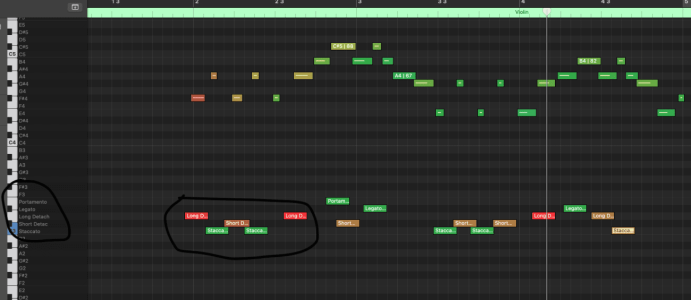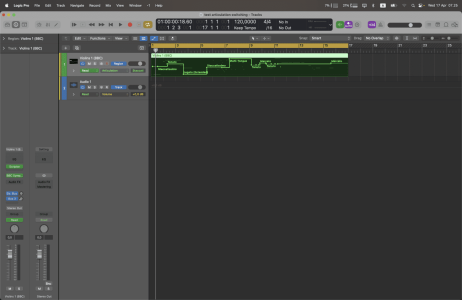Lambchops
Member
Hi all,
Some may find this useful so I'm posting here.
I just created a mapped instrument in the Logic Environment window on a blank midi track, linked it to a monitor object then linked the monitor object to a track containing Synchron player (in this case Sync'd solo violin).
Set up a custom preset and was able to name the keys in the piano roll to match the articulations in the preset.
So then I make the music and keyswitches on the mapped instrument track and it links to the Synchron track.
Long and short of it is I get keyswitch labels in the piano roll editor.
Watched a YouTube video to set it up.
Going to be very useful as I add more articulations.
Some may find this useful so I'm posting here.
I just created a mapped instrument in the Logic Environment window on a blank midi track, linked it to a monitor object then linked the monitor object to a track containing Synchron player (in this case Sync'd solo violin).
Set up a custom preset and was able to name the keys in the piano roll to match the articulations in the preset.
So then I make the music and keyswitches on the mapped instrument track and it links to the Synchron track.
Long and short of it is I get keyswitch labels in the piano roll editor.
Watched a YouTube video to set it up.
Going to be very useful as I add more articulations.
Attachments
Last edited:









